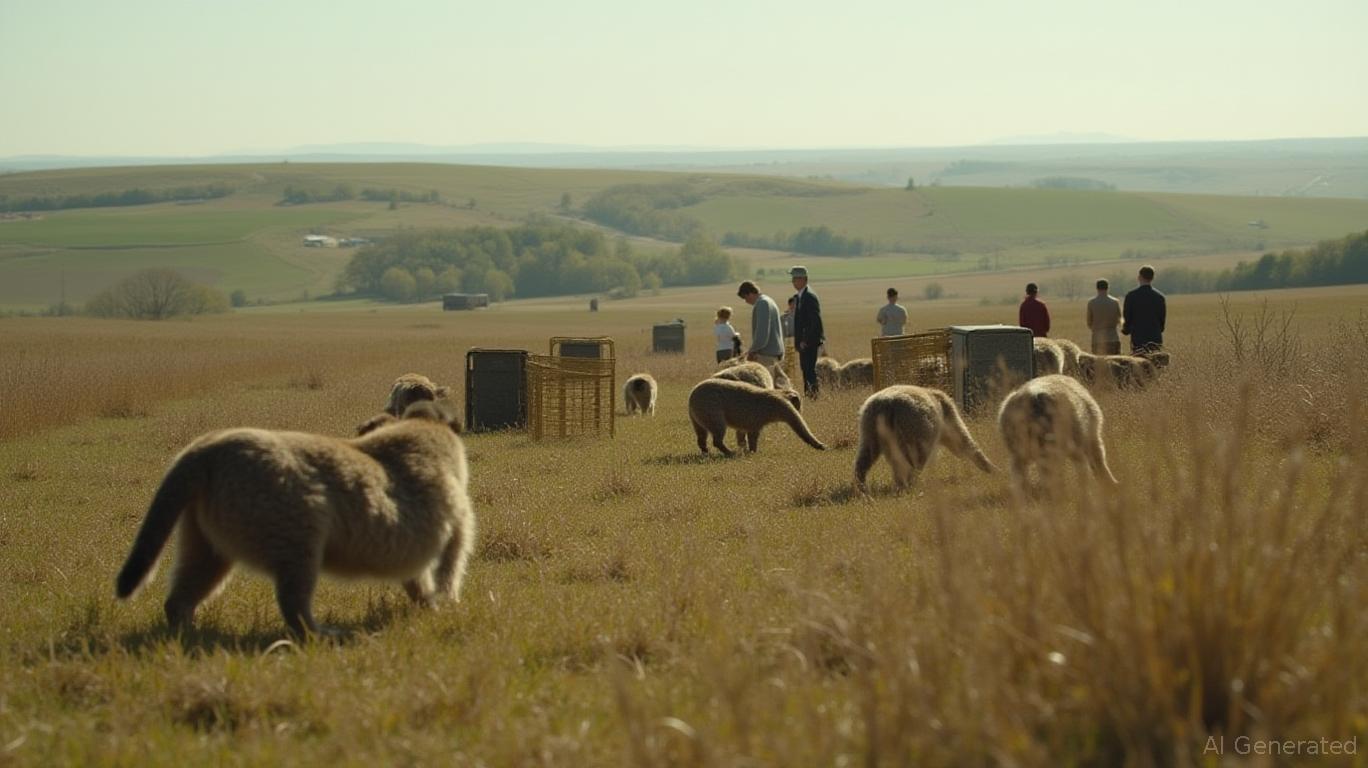Iowa mink release triggers environmental disaster and ignites discussion over federal anti-terrorism legislation
- Iowa farmers race to recapture nearly 2,000 mink released in suspected anti-fur protest, risking animal deaths and ecological harm. - Fur Commission USA condemns the act as federal "terrorism" under AETA, citing past charges for similar releases disrupting mink farming. - Over 60% of mink recovered by Friday, but remaining animals face 24–48 hour survival window due to lack of resources. - U.S. mink farming industry generates $300M annually but faces decline, with animal rights groups criticizing inhuman
Farmers in Iowa are urgently trying to recover close to 2,000 mink that were set free in what authorities suspect was an anti-fur demonstration, an act the Fur Commission USA has labeled a "terrorist act" under federal statutes, according to
This event has sparked renewed discussion about animal rights activism and the financial consequences for the mink industry. The Fur Commission USA, representing American mink farmers, noted that one or two such incidents happen each year, usually motivated by anti-fur campaigners. "Setting farm-raised mink loose into the wild actually causes harm to the animals and upsets the balance of local ecosystems," said Challis Hobbs, the commission’s executive director. Some of the freed mink have already killed ducks and geese on the property, adding to the farmer’s losses.

Under the Animal Enterprise Terrorism Act (AETA), federal law classifies such acts as terrorism if they are intended to "obstruct or destroy" animal-related businesses. Hobbs mentioned that previous mink releases have resulted in charges under this law, but as of Friday, no suspects had been apprehended. Sgt. Todd Denton of the Harrison County Sheriff's Office declined to provide details about the ongoing investigation, and the farm owner, via Hobbs, would not speak to the media.
Although the U.S. mink industry is smaller than it once was, it still plays a significant economic role. According to Fortune, there are about 275 mink farms in 23 states, producing roughly 3 million pelts each year with a value exceeding $300 million. However, output has dropped over the last ten years, with only 771,000 pelts produced in 2024. Animal welfare organizations, such as the Animal Legal Defense Fund, maintain that mink farming is cruel and poses health hazards, pointing to disease outbreaks like avian flu as evidence.
Farmers are now using live traps and working around the clock to retrieve the animals, but their chances of success are dwindling. "We’re running out of time," Hobbs warned. "The longer these mink are out in the wild, the greater the risk they’ll die—or become a danger to native species and other farm animals."
Disclaimer: The content of this article solely reflects the author's opinion and does not represent the platform in any capacity. This article is not intended to serve as a reference for making investment decisions.
You may also like
Cardano News Today: Cardano's Approach to Domains: Balancing Centralization Issues with Web3 Goals
- Cardano Foundation seeks .ada and .cardano TLDs to strengthen brand control and enable Web2-Web3 interoperability, budgeting $700k for application and $350k annual registry costs. - ADA shows 70M whale accumulation and bullish technical signals (golden cross, triangle pattern), though recent 12% dip below $0.66 raises short-term correction risks. - T. Rowe Price's ADA-inclusive crypto ETF filing and SEC's 16 ETF decisions highlight growing institutional interest, while community debates TLD governance ce

Bitcoin Updates Today: Bitcoin's Bullish Trend: Institutional Investments and ETF Growth Strengthen Market Stability
- Bitcoin's bull market remains intact with institutional holdings and ETF adoption reinforcing long-term resilience, per FXStreet and BeInCrypto analyses. - U.S. BTC/ETH ETFs now manage $175B+ assets, with BlackRock's IBIT holding $86B alone, signaling institutional confidence in crypto as inflation hedge. - Dolphin wallets (100-1,000 BTC) control 26% of supply and show structural strength, though liquidity inventory has fallen to 8.3 months. - Tesla and SpaceX maintain $2.33B+ in Bitcoin reserves, with S

Bitcoin Updates: Production Slowdown and Accommodative Fed Policies Extend Bitcoin's Bull Market Through 2026
- Analysts like Raoul Pal link Bitcoin's bull cycle to ISM PMI stagnation below 50, predicting a 2026 peak as historical patterns suggest prolonged expansion. - Manufacturing struggles (high tariffs, weak demand) delay PMI recovery, historically tied to Bitcoin's upward momentum, with Q3/Q4 2025 peaks possible. - BTC's 92% YTD surge and low MVRV ratio (3.11) indicate undervaluation, while Fed's 1.77% TIPS yields and S&P 500 correlation (0.86) support liquidity. - Geopolitical risks (U.S.-China tariffs, Sou

Bitcoin’s Market Influence Grows Despite Lack of New Thiel Endorsement